#grasshopper modeling
Explore tagged Tumblr posts
Text
youtube
In this Grasshopper exercise for beginners, you'll learn about many components and techniques that will help create many forms besides the one in the video. At the end of this tutorial, I will leave you with 2 small exercises that you can do on your own, basically minor adjustments to this exercise.
#mcneel grasshopper#grasshopper3d#grasshopper#grasshopper tutorials#parametric3d#parametric modeling#parametric design#grasshopper modeling#learn grasshopper#rhino grasshopper#mcneel rhino#rhino 3d#parametric tutorials#grasshopper tips and tricks#Youtube
2 notes
·
View notes
Text
My OC Leaf-foot
☆ 🪲 ☆ 🐛 ☆ 🐜 ☆ 🐞 ☆ 🪲 ☆ 🐛 ☆ 🐜 ☆ 🐞 ☆


They are a hooded grasshopper (teratodes monticollis) as in both their species name and their appearance. They live in a small village and love to collect moss balls and mushrooms.
☆ 🪲 ☆ 🐛 ☆ 🐜 ☆ 🐞 ☆ 🪲 ☆ 🐛 ☆ 🐜 ☆ 🐞 ☆
Click 2 see more artwork
☆ 🪲 ☆ 🐛 ☆ 🐜 ☆ 🐞 ☆ 🪲 ☆ 🐛 ☆ 🐜 ☆ 🐞 ☆

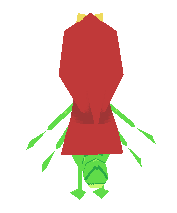

#bugs#bug art#insects#grasshopper#fav insect#artwork#my art#oc#oc art#original character#original art#insect#MY BLORBO#digital art#pixel art#3d model#concept art#cute#cozy#character design
24 notes
·
View notes
Text

Action Radar — The Prodigy
#fanart#digital art#my art#art#suda51#no more heroes#travis touchdown#grasshopper manufacture#ktp#kill the past#3d render#3d art#3d artwork#blender#blender render#genderbend#butch#I cant believe my fem travis model is in an actual functional state....
37 notes
·
View notes
Text
At the mole`s country place – amongst the flowers

Three-dimensional scene for today based on summer and country house. So, it is already end of winter. And almost start of spring. And somewhere in spring it is good to go to the country house. Where to go? That’s right! To the country house. Soon it will start to grow a grass. And it grows fast. Everything will start to be green very fast.

Country house - it is a best place for free time and relax. It is funny, sunny and everything around is green. Lots of friends around. Frogs and grasshoppers. Frogs are jumping in a grass. And hiding from a sun. For them, it is very hot. But they can to jump into water, to be long underwater. And grasshoppers – are just excellent musicians. Such a songs they sing. And jumps very good. They are talented.

And here in my three-dimensional drawing. Such a virtual three-dimensional world. At scene. You are invited as a guest, by a mole! Mole invites you to visit his place. He is black. And dig a underground passages. But he is clever and intelligence. A clever mole. He can to learn, read books, can programing. And he has a little house. Just like you at your country house place. There is here a little fence. And lots of big flowers! So, this place mole is living! He does not forget about underground passages too. And from his house there is underground way. There is a labyrinth there. And lots of little rooms.

And now mole is sitting at the sun and have a free time. Mole is happy about his life. At the morning he already does dig. He learns something. And now he is doing his free time. Mole is learning how to program a QBasic and C. Today he is having a free time. And tomorrow he will be study all day long.

It is very sunny at his place. And hot. There a river nearby. You can swim there. And speak with fish and a crab. And what a beautiful flowers are here. And everything is green. Grass is green and beautiful. You can sit here for a long time and watch side by side.

Mole has lots of friends. They are frogs, ants, grasshoppers, chickens and different other little animals. And sometimes from somewhere far a goose is going to his place. He is big and has a long neck. Goose can program with Turbo Pascal. Goose is very clever. He can swim. And dive. And it is comfortable for him to speak with fish.
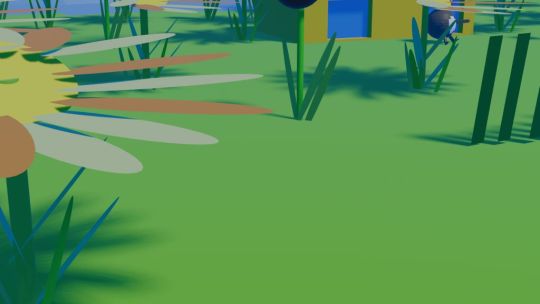
Sparrow is flying here and there and tells a different stories. He is living a little far in a forest. At the tree he has a house. And it is very interesting to listen his stories. And it was crawling already grass snake and tells about programming language python. And game snake he is programming. And crawling next.
And in the evening, everyone will go to drink a tea with a rabbit. It will be beautiful sunset in the evening. It will go different rabbits and bunnies. And it will be lots of fun. They are very positive all the time. Pinguin and polar owl will go. In the evening, It is not hot for them. And everyone will drink a tea.

Dima Link is making retro videogames, apps, a little of music, write stories, and some retro more.
WEBSITE: http://www.dimalink.tv-games.ru/home_eng.html ITCHIO: https://dimalink.itch.io/ GAMEJOLT: https://gamejolt.com/@DimaLink/games
BLOGGER: https://dimalinkeng.blogspot.com/
#3d scene#blender#3d model#summer#sunny#mole#good animals#kind animals#country house#village#flowers#river#grasshopper#fish#goose#little animals#grass#tea#free time#relax#low poly
5 notes
·
View notes
Text
love this movie, I mantain the idea was perfect, ecco una dimostrazione del mio amore:

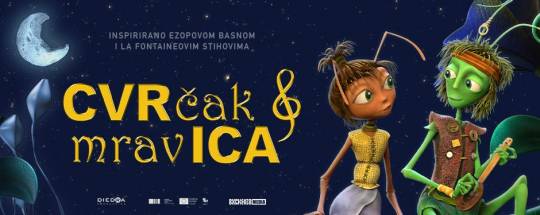

#Cvrčak i mravica#parallels#web weaving#per il lol#e perchè avevo tutto a portata di click#my soft spot for subverting aesop ' cicada and the ant' fable#can you tell I love subversion of that story????#can you tell this movie gets it???#but literally why are english translations grasshopper or cricket??? XD#i can at least get that cricket sing#but grasshopper do not even sing lol#if they used a cicada design it would have been cool#but alas#twink cavallette è quello che piace fare ai 3d modeler#da ouat a questo.... solo strane cavallette twink verdissime#cavallette twink verdissime e formiche marroni gli unici 2 gender#moss text#mossmx edit#ora come entro in contatto con un* croat* per farmi spiegare le sottigliezze delle references comuniste nel film???
3 notes
·
View notes
Text
a lady stopped me on my way out of the coffee shop to say i look like a super model 🥺
#𓆩𖥔𓆪 — the divine#there are still kind people in the world !#no longer upset that i was assaulted by a grasshopper#how can i be when someone thinks i look like a super model?#ego up by 10.
0 notes
Text
youtube
In this third part of the Grasshopper series on attractors for beginners, we will learn about another component called Curve Closest Point, another alternative way to have attractor points affecting your shape. I recommend you also watch the first two videos in the series to have a better understanding about the attractors' logic, even though this video, by itself alone, presents a good explanation on its own. In the video description, you can find the links for the other two videos, also a link to download the demo file used in the second part that I used as a starting point for this tutorial.
#rhino grasshopper#grasshopper 3d#grasshopper tutorials#mcneel grasshopper#parametric 3d#parametric tutorials#grasshopper beginners#parametric beginners#parametric modeling#learn grasshopper#mcneel#learn parametric#grasshopper attractors#Youtube
0 notes
Text
Use of Rhino 3D Modeling Tutorials
There can be circumstances where you come up with a great idea and concept about a project but do not have the right technical skills to complete it. If your imagined design is too complicated you may have no choice but to simply give it up. This is why Rhino 3D tutor for Architects is important.Rhinoceros with Grasshopper is a robust 3D modeler meant for construction, fabrication, engineering and architecture. It helps enhance the ability of a team to effectively execute creative building form. Rhino is widely used for complex structures, versatile shapes, parametric facades,repetitive components, as well as free form roofs.
If you are unable to complete a project, you lose out on opportunities. The opportunity to get the client you want, to win architectural competitions, or to even to get a better job. There are many architects with great design ideas, but are not able to effectively present it as they do not have enough knowledge to make a project in 3D in one program. Spending days simply switching programs and trying out new workflows can be a huge hassle. Moreover, even after these efforts, the result can be fairly average. To avoid these circumstances, it is prudent to try out Rhino 3D Modeling Tutorials.
Rhinoceros 3D provides you with complete design freedom in the domain of parametric architecture, complex fluid form modeling, project presentation and conceptual design. Grasshopper for Rhino is among the most powerful tool that enables architects to create parametric designs with ease. It would allow you to explore parametric modeling without having to learn how to script, as well as make use of graphical programming interface for the purpose of creating your algorithms and parametric geometry. You can easily change the input parameters and watch your geometry changing shape in an instant.
Rhino for Architects Course would help you to explore the world of parametric design with Grasshopper, understand the logic behind it and how to implement it on your own architectural projects. Details of Rhino or Grasshopper 3D tutorial can be found online.
0 notes
Text








"𝑯𝒆𝒓𝒆 𝒊𝒔 𝒕𝒉𝒆 𝒍𝒊𝒕𝒕𝒍𝒆 𝒃𝒓𝒐𝒏𝒛𝒆 𝒌𝒆𝒚 𝒕𝒉𝒂𝒕 𝒐𝒑𝒆𝒏𝒔 𝒕𝒉𝒆 𝒕𝒘𝒐 𝒆𝒃𝒐𝒏𝒚 𝒄𝒂𝒔𝒌𝒆𝒕𝒔 𝒐𝒏 𝒕𝒉𝒆 𝒎𝒂𝒏𝒕𝒆𝒍𝒑𝒊𝒆𝒄𝒆 𝒊𝒏 𝒕𝒉𝒆 𝑳𝒐𝒖𝒊𝒔-𝑷𝒉𝒊𝒍𝒊𝒑𝒑𝒆 𝒓𝒐𝒐𝒎. ...𝑰𝒏 𝒐𝒏𝒆 𝒐𝒇 𝒕𝒉𝒆 𝒄𝒂𝒔𝒌𝒆𝒕𝒔, 𝒚𝒐𝒖 𝒘𝒊𝒍𝒍 𝒇𝒊𝒏𝒅 𝒂 𝒔𝒄𝒐𝒓𝒑𝒊𝒐𝒏, 𝒊𝒏 𝒕𝒉𝒆 𝒐𝒕𝒉𝒆𝒓, 𝒂 𝒈𝒓𝒂𝒔𝒔𝒉𝒐𝒑𝒑𝒆𝒓, 𝒃𝒐𝒕𝒉 𝒗𝒆𝒓𝒚 𝒄𝒍𝒆𝒗𝒆𝒓𝒍𝒚 𝒊𝒎𝒊𝒕𝒂𝒕𝒆𝒅 𝒊𝒏 𝑱𝒂𝒑𝒂𝒏𝒆𝒔𝒆 𝒃𝒓𝒐𝒏𝒛𝒆: 𝒕𝒉𝒆𝒚 𝒘𝒊𝒍𝒍 𝒔𝒂𝒚 𝒚𝒆𝒔 𝒐𝒓 𝒏𝒐 𝒇𝒐𝒓 𝒚𝒐𝒖. 𝑰𝒇 𝒚𝒐𝒖 𝒕𝒖𝒓𝒏 𝒕𝒉𝒆 𝒔𝒄𝒐𝒓𝒑𝒊𝒐𝒏 𝒓𝒐𝒖𝒏𝒅, 𝒕𝒉𝒂𝒕 𝒘𝒊𝒍𝒍 𝒎𝒆𝒂𝒏 𝒕𝒐 𝒎𝒆, 𝒘𝒉𝒆𝒏 𝑰 𝒓𝒆𝒕𝒖𝒓𝒏, 𝒕𝒉𝒂𝒕 𝒚𝒐𝒖 𝒉𝒂𝒗𝒆 𝒔𝒂𝒊𝒅 𝒚𝒆𝒔. 𝑻𝒉𝒆 𝒈𝒓𝒂𝒔𝒔𝒉𝒐𝒑𝒑𝒆𝒓 𝒘𝒊𝒍𝒍 𝒎𝒆𝒂𝒏 𝒏𝒐....𝑻𝒉𝒆 𝒈𝒓𝒂𝒔𝒔𝒉𝒐𝒑𝒑𝒆𝒓! 𝑩𝒆 𝒄𝒂𝒓𝒆𝒇𝒖𝒍 𝒐𝒇 𝒕𝒉𝒆 𝒈𝒓𝒂𝒔𝒔𝒉𝒐𝒑𝒑𝒆𝒓! 𝑨 𝒈𝒓𝒂𝒔𝒔𝒉𝒐𝒑𝒑𝒆𝒓 𝒅𝒐𝒆𝒔 𝒏𝒐𝒕 𝒐𝒏𝒍𝒚 𝒕𝒖𝒓𝒏: 𝒊𝒕 𝒉𝒐𝒑𝒔! 𝑰𝒕 𝒉𝒐𝒑𝒔! 𝑨𝒏𝒅 𝒊𝒕 𝒉𝒐𝒑𝒔 𝒋𝒐𝒍𝒍𝒚 𝒉𝒊𝒈𝒉!"
(ɢ���ꜱᴛᴏɴ ʟᴇʀᴏᴜx, ᴛʜᴇ ᴘʜᴀɴᴛᴏᴍ ᴏꜰ ᴛʜᴇ ᴏᴘᴇʀᴀ)
The scorpion and the grasshopper always hold a unique meaning to fans of Gaston Leroux's original Phantom novel. Erik's ultimatum to Christine forced her to choose between marrying her ghoulish captor, or deny him at the peril of everyone in the Opera House. It was implied that the grasshopper was connected to the stores of gunpowder Erik had wired to blow the building sky high.
I recently found this brilliant, antique Japanese bronze grasshopper figurine, and knew I had to acquire it. It just arrived from Japan, and is a brilliant piece. Paired with an antique Chinese scorpion and model caskets, it makes a beautiful addition to my Phantom collection.
#phantom of the opera#poto#gaston leroux#phantom#phantom novel#classic literature#Japanese bronze#antiques#opera ghost#Erik#erik the phantom#hops jolly high#grasshopper and scorpion#literature
288 notes
·
View notes
Text
Rough timeline of the discovery of genes and DNA
(mostly condensed from the first half of S. Mukherjee, The Gene: An Intimate History, 2016, and this 1974 paper)
1857-1864: Gregor Mendel experiments with breeding peas at the monastery of Brno. The results show that information about flower color, pod shape etc. is transmitted in discrete blocks that do not mix, and can persist unexpressed in a generation to manifest again in the next.
1865-1866: Mendel's results are published in a minor journal and effectively forgotten for 35 years. He corresponds with physiologist Carl von Nägeli, who dismisses them as "only empirical" (???).
1868: Unaware of Mendel's work, Darwin proposes pangenesis as mechanism of heredity: every body part produces "gemmules" that carry hereditary information and merge to form gametes. This does not explain how new traits aren't immediately diluted out of existence, or why acquired changes aren't inheritable.
1869: Friedrich Miescher extracts a mysterious substance from pus on used bandages and salmon sperm. He calls it nuclein (later: chromatin), as it seems to be concentrated in cell nuclei.
1878: Albrecht Kossel separates nuclein into protein and a non-protein component, which he calls nucleic acid, and breaks it down in five nucleotides.
1882: Darwin dies, bothered -- among other things -- by the lack of a plausible mechanism to transmit new variation. Legend has it that Mendel's paper lay on a bookshelf of his study, unread.
1883: August Weissmann, noting that mice with cut tails always give birth to fully-tailed mice, theorizes that hereditary information is contained in a "germplasm" fully isolated from the rest of the body, contra pangenesis. At each generation, only germplasm is transmitted, and gives separate rise to a somatic line, i.e. the body, which isn't.
ca. 1890: Studying sea urchin embryos in Naples, Theodor Boveri and Wilhelm von Waldeyer-Hartz notice large coiled masses of nuclein inside cell nuclei which can be dyed blue with aniline. They call them chromosomes, literally "colorful bodies". Simultaneously, Walter Sutton discovers chromosomes in grasshopper sperm.
1897: Hugo de Vries, after collecting hundreds of "monstrous" plant varieties near Amsterdam, realizes (also unaware of Mendel's work) that each trait is due to a single discrete particle of information, never mixing with the others, which he calls pangene in homage to Darwin. He also notices the appearance of completely new variants, which he calls mutants. In the same year, Carl Correns -- a former student of Nägeli, who had completely neglected to mention Mendel's work -- reproduces it exactly in Tubingen with pea and maize plants.
1900: Having finally found out about Mendel's publication, De Vries rushes to publish his model before he can be accused of plagiarism, which happens anyway. Correns does the same. Erich von Tschermak-Seysenegg also independently recreates Mendel's results with pea plants in Vienna. Come on, guys, this is embarassing.
1902: Boveri and Sutton independently propose that hereditary information is carried by chromosomes. Supporters of this hypothesis generally hold that information is carried by proteins, with the simpler nucleic acids (only 5 nucleotides vs. 20 aminoacids) serving as scaffold.
1905: William Bateson coins the word genetics to describe the field growing mostly from De Vries' work. He realizes it should be possible to deliberately select organisms for specific individual genes. Meanwhile, Boveri's student Nettie Stevens discovers in mealworms a strangely small chromosome that is found only in males -- chromosome Y. This is the first direct evidence that chromosomes do, in fact, carry genetic information.
1905-1908: Thomas Hunt Morgan and his students breed and cross thousands of fruit flies in a lab in New York. Contra Mendel, they notice that traits are not passed down in a completely independent way: for example, male sex and white eyes usually manifest together. This suggests that their information particles are attached to each other, so that the physically-closest traits are more likely (but not guaranteed!) to be transmitted together.
1909: Phoebus Levene and his coworkers break down nucleic acids by hydrolysis into sugars, phosphate, and nucleobases. They assume that nucleobases must repeat along a chain in a repetitive sequence. In a treatise on heredity, Wilhelm Johannsen shortens "pangene" to gene. It's a purely theoretical construct, with no known material basis.
1911: Using Morgan's data on trait linkage, his student Alfred Sturtevant draws the first genetic map, locating several genes along a fruit fly chromosome. Genetic information now has a physical basis, although not yet a mechanism of transmission.
1918: Statistician Ronald Fisher proposes that traits appearing in continuous gradients, such as height, can still be explained by discrete genes if multiple genes contribute to a single trait, resolving an apparent contradiction. (Six genes for height, for example, are enough to produce the smooth bell curve noticed half a century earlier by Francis Galton.)
ca. 1920: Bacteriologist Frederick Griffith is studying two forms of pneumococcus, a "smooth" strain that produces deadly pneumonia in mice (and people) and a "rough" strain that is easily dispatched by immunity. He finds out that if live "rough" pneumococci are mixed with "smooth" ones killed by heat, the "rough" can somehow acquire the deadly "smooth" coating from the dead.
1926: Hermann Muller, another student of Morgan, finds out he can produce arbitrary amounts of new mutant flies by exposing their parents to X-rays.
1928: Griffith describes the acquired "transformation" of bacteria in an extremely obscure journal.
1929: Levene identifies the sugars in "yeast nucleic acid" and "thymus nucleic acid" as ribose and deoxyribose, respectively. The two will henceforth be known as ribonucleic acid (RNA) and deoxyribonucleic acid (DNA).
ca. 1930: Theodosius Dobzhansky, who also had worked with Morgan, discovers in wild-caught fruit flies variations of wing size, eye structure etc. that are produced by genes arranged in different orders on the chromosome. This rearrangement is the first physical mechanism for mutation discovered.
1940: Oswald Avery repeats Griffith's experiments with pneumococci, looking for the "transforming principle". Filtering away the remains of the cell wall, dissolving lipids in alcohol, destroying proteins with heat and chloroform does not stop the transformation. A DNA-degrading enzyme, however, does. Therefore, it is DNA that carries genetic information.
1943: By mixing flies with different gene orders and raising the mixed populations at different temperatures, Dobzhansky shows that a particular gene order can respond to natural selection, increasing or decresing in frequency.
1944: Avery publishes his results on transforming DNA. Physicist Erwin Schrödinger writes a treatise (What Is Life?) in which he states, on purely theoretical ground, that genetic information must be carried by an "aperiodic crystal", stable enough to be transmitted, but with a sequence of sub-parts that never repeat.
1950: In Cambridge, Maurice Wilkins starts using X-ray diffraction to try and make a picture of the atomic structure of dried DNA (as Linus Pauling and Robert Corey had done earlier with proteins). He is later joined by Rosalind Franklin, who finds a way to make higher-quality pictures by keeping DNA in its hydrated state. By hydrolyzing DNA, Erwin Chargaff notes that the nucleobases A and T are always present in exactly the same amount, as if they were paired, and so are C and G -- but A/T and C/G can be different amounts.
1951: Pauling publishes a paper on the alpha-helix structure of proteins. Having attended talks by Wilkins and Franklin, James Watson and Francis Crick attempt to build a physical model of DNA, a triple helix with internal phosphate, but Franklin notes it's too unstable to survive.
1952: Alfred Hershey and Martha Chase mark the protein envelope of phage viruses with radioactive sulfur, and their DNA with radioactive phosphorus. The phosphorus, but not the sulfur, is transmitted to host bacteria and to the new generation of phages. This indicates that DNA is not just exchanged as "transforming principle", but passed down through generations.
1953: Pauling and Corey also propose a structure of DNA, but they make the same mistake as Watson and Crick. These receive from Wilkins an especially high-quality photo (taken in 1952 by either Franklin or her student Ray Gosling). Combining this picture with Chargaff's measurements, they conclude that DNA must be a double helix, with a sugar-phosphate chain outside, and nucleobases meeting in pairs on the inside (A with T, C with G). The complementary sequences of bases give a clear mechanism for the storage and replication of genetic information.
1950s: Jacques Monod and François Jacob grow the bacterium Escherichia coli alternately on glucose and lactose. While its DNA never changes, the RNA produced changes in step with the production of glucose-digesting and lactose-digesting enzymes. So DNA is not directly affected, but different sequences are copied onto RNA depending on need.
1958: Arthur Kornberg isolates DNA polymerase, the enzyme that builds new DNA strands in the correct sequence. By inserting into DNA a heavier isotope of nitrogen, Matthew Meselson and Franklin Stahl show that each strand remains intact, separating during replication and then serving as template for a new one.
1960: Sydney Brenner and Jacob purify messenger RNA from bacterial cells. This seems to copy the sequence of a single gene and carry it to ribosomes, where proteins are built. RNA must encode the sequence of aminoacids of a protein, presumably in sets of 3 nucleotides (the smallest that can specify 20 aminoacids).
1961-1966: Multiple labs working in parallel (Marshall Nirenberg-Heinrich Matthaei-Philip Leder, Har Khorana, Severo Ochoa) map every possible triplet of nucleotides to a corresponding aminoacid. Synthetic RNA is inserted into isolated bacterial ribosomes, and aminoacids are marked one at a time with radioactive carbon to check the sequence of the resulting proteins.
1970: Paul Berg and David Jackson manage to fuse DNA from two viruses into a single sequence ("recombinant DNA") using DNA-cutting enzymes extracted from bacteria.
1972-1973: Janet Mertz joins Berg and Jackson, and proposes inserting the recombinant DNA into the genome of E. coli, exploiting the bacterium for mass production. Herb Boyer and Stanley Cohen perform a similar experiment merging bacterial DNA, and linking it to an antibiotic-resistance gene so that the recombinant bacteria can be easily isolated.
1975-1977: Frederick Sanger isolates template strands of DNA to build new ones with DNA polymerase, but uses altered and marked nucleobases that stop polymerization. By doing so, then segregating the shortened sequences by length and recognizing their final base with fluorescence, it's possible to read the exact sequence of bases on a DNA strand.
350 notes
·
View notes
Text
Ducklings – grass, river n summer
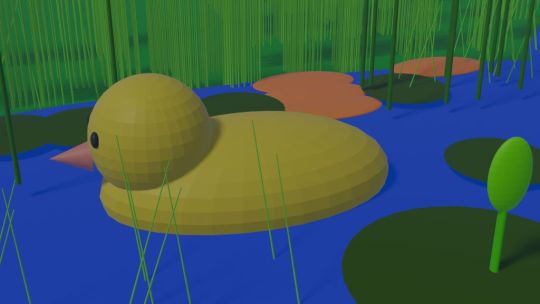
Three dimensional scene for today about theme of little ducklings. And summer field. Ducklings are very yellow. And they like a little sun. Because of they are themselves as yellow as a little sun. They are also like a little sun. They can run with a fun around the field. They are going though a grass like a young naturalists. Grass is so big. And with a beak they can pull grass a little. And they go forward.
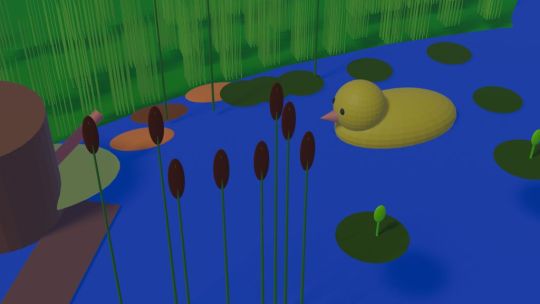
Somewhere this place there is river or lake. Waterlilies are here. Reed is here. And lots of grass. In a shadows of the trees it is more fresh. And it is excellent summer day. With a grasshoppers singing. Look, someone jump into the water. It is one more duckling. Ducklings like to jump into the water, and dive. Swim is good. Water is blue. And it flows somewhere far. Ducklings knows this place very good. It is their place. There are lots of ducklings here. They are running and swimming all the time.

Duckling is swimming in the river. Another one is going though a grass. Sun is so big and yellow. And it is possible to be a friend of him! And it is so good! And sometimes it happens rain. But today it will be no raining. It will be warm and sunny. So, duckling is reaching a water. And he looks. It is a water so far. And water lilies and reed. And duckling has excellent paws. To walk. And even better for swimming. So, duckling bravely goes into the water. And he stands there.

Around him, it is swimming another duckling. Duckling is busy with looking and observe a what is it underwater. A little diving into the depth. It is so good to be a duckling. You can swim. River - it is a whole world. Also including lots of interesting underwater. There is a fish there! Big and small. And do you know that?

So, grasshoppers cannot swim. And they do not know! But it is not a problem! Duckling will swim and looks what is underwater. And tell to the grasshoppers. And those will compose a songs funny and good and kind! Maybe even about a fish! But it will be in the evening. And right now, it is begining of the day. And it is good to run in the water. And run in the grass!
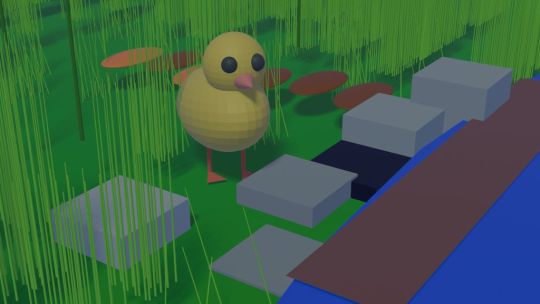

Dima Link is making retro videogames, apps, a little of music, write stories, and some retro more.
WEBSITE: http://www.dimalink.tv-games.ru/home_eng.html ITCHIO: https://dimalink.itch.io/ GAMEJOLT: https://gamejolt.com/@DimaLink/games
BLOGGER: https://dimalinkeng.blogspot.com/
#blender#3d model#3d scene#3d graphics#retro#low poly#ducklings#summer#field#river#reed#water lilies#country house#3d art#3d render#art#duck#yellow#sun#sunny#positive#grasshopper#lake#swim#retro game#retro art
5 notes
·
View notes
Note
What do the helicopters mean in your art?
Also are you schizoid like me? :3
I once lived in a place where there was a ubiquitous presence of extremely well-funded and militarized police and the black helicopters were constant, tangible visualizations of a normally invisible power, which is what the Greek word apocalypse means, but I also like that they look like pregnant bug animals slash are kinda cute.
I have my cluster A side but I became a gregarious as opposed to a solitary strangelet at some point, like a grasshopper becoming a locust. I don't think the diagnostic models afforded by psychiatry are very helpful to me in this season of my life. I am more one to assemble my own models from diverse sources and then call down the requisite pharmakeia from heaven

282 notes
·
View notes
Text


Man Grasshopper with Kasimodo by Yasushi Nirasawa. via Creature Core Artbook (1992) 200×400×250mm / Fando 200g, Sculpey 150g, Volks’ soft vinyl model, Tamiya’s plastic model – Harley Davidson, Real fur 200×100mm, Animals’ bone
A man who was turned into a grasshopper-human by an organization breaks away from them. Hiding his sorrow as a modified human and his ugly face behind a mask, he rides a motorcycle and wanders alone. He silently executes the evil modified humans he encounters during his journey. However, over time, he begins to feel pleasure in the act of killing. An insect-human character with the image of a “Midget-type” dirty hero. The motorcycle is also modeled in an avant-garde form.
Featured in Hobby Japan Extra, Spring 1991 issue.
108 notes
·
View notes
Text

FRACTAL TREES – BASIC L-SYSTEM- EXAMPLE 9.4
Fractal processes have practical applications in creating 3D vegetation for models using plant generators like Xfrog and Laubwerk. These tools utilize mathematical and botanical principles to produce realistic plants. A key algorithm family used in these generators is Lindenmayer systems (L-systems), which generate complex structures through iterative production rules. Understanding L-systems can enhance the use of these tools or inspire custom design applications. The simplest L-system involves drawing lines from a point at variable angles and reducing line length proportionally with each generation, creating intricate plant-like structures.
L-systems, such as those created with Grasshopper and Anemone, start with a set point and draw lines at defined angles and lengths, doubling the number of lines with each generation. Varying angles and lengths produces diverse structures. The book "The Algorithmic Beauty of Plants" is a valuable resource for understanding these systems. By creating simple tree generators with random seeds, users can design non-repetitive, impressionistic vegetation models for various applications.
Using tools like Rabbit by Morphocode in Grasshopper facilitates experimenting with L-systems. By encoding production rules into loops, users can generate structures that mimic natural plant growth. The iterative nature of L-systems, with each generation building upon the last, allows for the creation of detailed and varied vegetation models, enhancing both rendering quality and the representation of vegetation massing in digital environments.
138 notes
·
View notes
Text
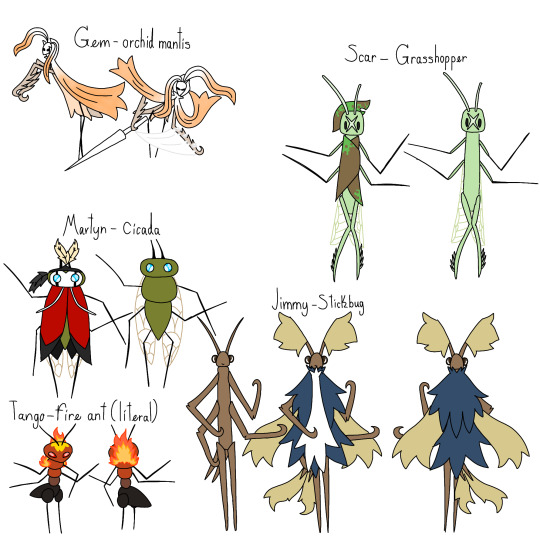
More Hollow Life AU! I love these guys' bugsonas! Especially Gem and Jimmy.
Gem wakes up in Mantis Village where she earns the respect of the lord through trial by combat. Scar in Fog Canyon where he immediately catches on to Millebelle's scam and wants in! Martyn wakes up just outside of Hallownest with Ren, they get picked up by the Grimm Troupe. Tango starts alone. Jimmy wakes up in the same room as Skizz with Mumbo not far from them, the 3 get picked up by Quirrel who babysits them!
Deciding to add some lore hear, the Watchers gave "gifts" to their "favorites" when they transplanted the lifers into Hallownest. Grian was given his cloak as there is Watcher symbol on the inside of it as a private reminder to him of where he hails. Jimmy's entire outfit was given to him by the Watchers, that's why it's so weird, they are reminding him of his place by modeling it off a canary. Scott's gift was getting to be the most useless bug in combat possible, along with a perfectly sized lantern to trap him in! I've yet to decide on Martyn's gift, but he must have one. Suggestions?
Speaking of suggestions, GIVE ME BUGS! I don't know what bugs to make everyone else and need suggestions! So far I have:
Grian - black widow
Pearl - moth
Bdubs - mosskin, infected
Lizzie - butterfly
Joel - bee
Scott - lumafly
Gem - orchid mantis
Scar - grasshopper
Martyn - cicada
Tango - fire ant
Jimmy - stick bug
Who do yall think should be infected or not?
#hollow knight#digital art#fanart#fanfic#Hollow Life AU#mcyt#life series#crossover#I'm temped to slap “infected” on all the lifers I know the least about so I don't have to deal with rangling them#thinking that Skizz should be infected as a reference to SL session 7 WL session 7 and WL session 8 - 3 times Skizz has been a zombie! 3!
27 notes
·
View notes
Text
My LOVELY OC — Grasshopper!
11-12 y.o, A loner who likes to hang out in the swamp.
He put on a mask and pretends to be a Worm. And they still haven't suspected anything
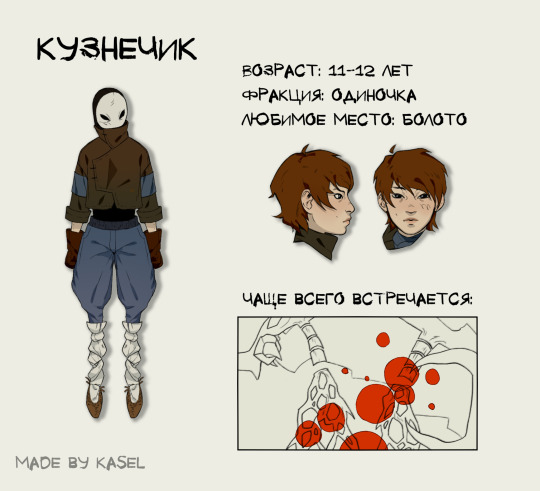
If he were in the game, he would have a mini-worm model. LIKE THIS!!

BTW, if you want to tell me about your pathologic OC, write me a private message or repost this post— IDK, I've been on this site for two years now and I still don't understand how it works
76 notes
·
View notes